There are many intriguing monsters in Greek mythology. Charybdis, the sea monster, was one of the most powerful and terrifying of them.
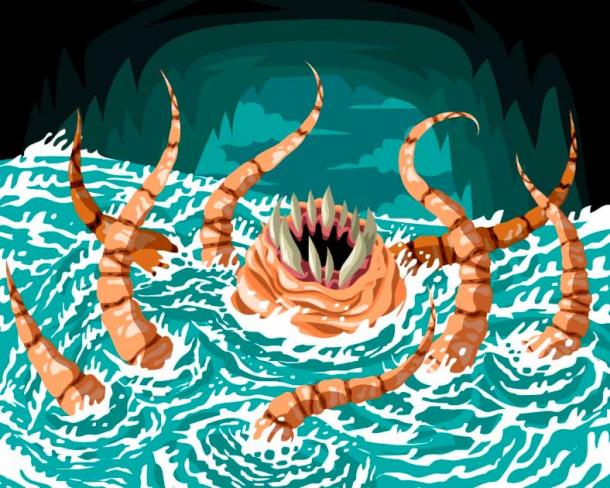
Charybdis would create deadly whirlpools simply by inhaling and exhaling ( matiasdelcarmine / Adobe Stock)
Charybdis was not just a monster, she was a force of nature who repeatedly appeared in Greek mythology as a roadblock in several Greek heroes’ journeys. Like many Greek monsters, Charybdis had a tragic backstory, turned into a monstrosity by the very gods she had once served. So what was Charybdis and why was she so powerful?
What was Charybdis?
Charybdis was a sea monster that the Greeks believed lived beneath a fig tree growing from a rock. This rock was located in an ocean strait, and another monster, Scylla, lived on a larger rock opposite.
Charybdis would swallow huge amounts of water three times a day and then belch it back up. This process created gigantic whirlpools that would drag in and destroy any nearby ships. Scylla, on the other side, would reach out and grab passing sailors for dinner.
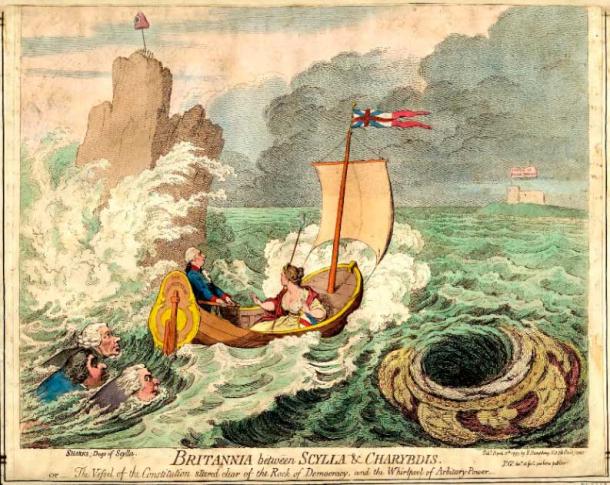
The myth of Scylla and Charybdis became a metaphor for difficult decisions. Etching of Britannia between Scylla and Charybdis, 1793 ( Public Domain )
The two rocks were said to have been within bow-shot of one another, making the strait incredibly perilous for ships. Wherever a ship sailed in the strait, they were within range of one of the beasts..
Early writers, like Homer, never gave the strait a location, imagining it was in some far-off, barely explored region of the sea. By the classical period, this had changed, and it was thought that the two lived in the Strait of Messina off the coast of Sicily. A whirlpool does exist there, although it is only dangerous to small boats in extreme conditions.
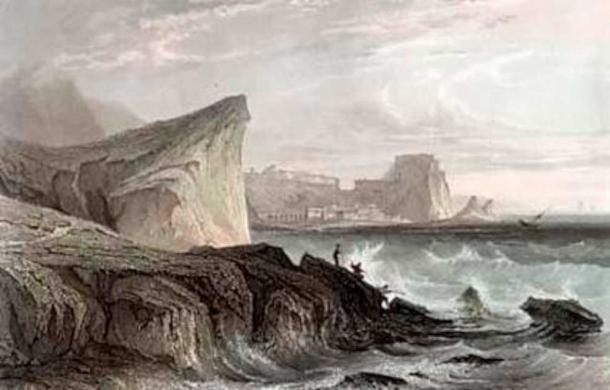
The Strait of Messina may have been the inspiration for the Scylla and Charybdis myth. 1840 steel engraving by A.H. Payne. ( Public Domain )
The Origin of Charybdis
There are conflicting accounts as to Charybdis’ origin. The earliest writers did not bother to give her an origin story or genealogy. She was simply a monstrous force of nature who had existed as long as the oceans themselves. Later writers claimed she was the daughter of the Greek ocean god Poseidon and the old goddess, Gaia, who was technically his grandmother.
At one point in Greek mythology, Zeus and Poseidon had a brotherly spat. Charybdis, the dutiful daughter, took her father’s side, and helped Poseidon drown lands and islands in seawater. This angered Zeus, who believed the land to be his domain and saw the flooding as theft. In retaliation, he captured Charybdis and chained her to the seabed.
Zeus then cursed Charybdis, turning her into a monster. The curse made her uncontrollably thirsty, and this is what caused her to swallow the ocean three times a day, in a desperate attempt to quench her thirst.
In a lesser-known and less popular tale, Charybdis began life as a normal mortal woman. She was said to be a particularly voracious woman, who one day stole an ox from Heracles’ cattle. Heracles was one of Zeus’s most favored sons, and so, this irked Zeus. As punishment, he struck the woman with one of his lightning bolts, sending her flying into the sea. There, thanks to her voracious nature, she transformed into the sea monster Charybdis.
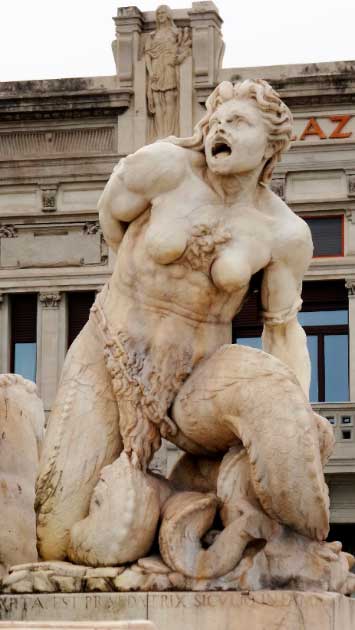
In some versions, Charybdis was a daughter of Poseidon, chained to the seabed by Zeus. The Neptune Fountain in Messina depicts the sea monster this way. (Xxlstier / CC BY 4.0 )
What Did Charybdis Look Like?
Depictions of Charybdis are very thin on the ground. The early Greek writers spent no time on her description, simply focusing on the whirlpools she formed. Later, she was described as a giant serpent-like creature with a massive, gaping maw that she used to swallow the water and create her whirlpools.
We get the clearest depiction from Homer. He described her as a massive, “bladder-like” creature with flippers for arms and legs. Like many of the most terrifying Greek monsters, Charybdis is always described in female terms.
Charybdis in Mythology
The Odyssey
Returning home from Troy, Odysseus was forced to sail through the perilous strait. He had been warned by the sorceress Circe of the danger Charybdis posed, and so Odysseus sailed close to the other side, where Scylla grabbed and ate six of his men.
Later on in the tale, Odysseus lost his ship and his men after they angered Helios. Odysseus found himself stranded on a raft, floating back down the strait towards Charybdis. This time he was caught in her whirlpool, and his raft was dragged down.
Luckily, Odysseus managed to grab hold of the fig tree growing from Charybdis’ rock. He waited for her to regurgitate the water and landed back on his raft, ready to continue his voyage home.
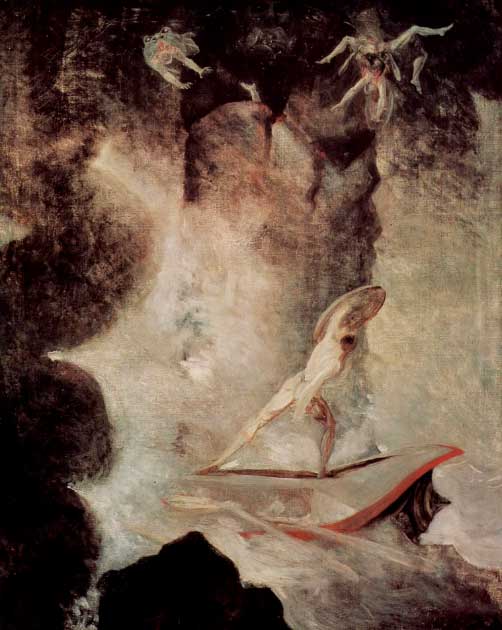
Odysseus in front of Scylla and Charybdis. Oil painting by Henry Fuseli, circa 1794 ( Public Domain )
Jason and the Argonauts
Charybdis had a small but important role to play in the legend of Jason and the Argonauts . While returning from Colchis, Jason was forced to sail back through the deadly strait. This should have been a death sentence, but Jason was favored by the goddess Hera.
Hera ordered one of the Nereids (sea nymphs), Thetis, to guide Jason’s ship, the Argo. Thetis guided the ship directly down the center of the strait, allowing Jason and his men to bypass both deadly threats. He was the only hero in Greek mythology to navigate the strait with no problems.
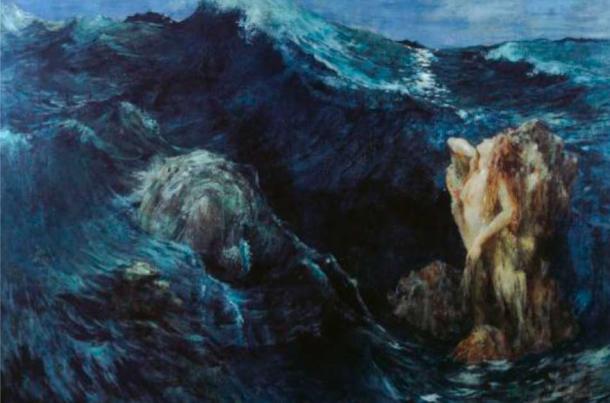
The goddess Hera sent a sea nymph to guide Jason and his Argonauts safely between Scylla and Charybdis. 1894 oil painting of the two sea beasts by Ary Renan. ( Public Domain )
Aeneas
The Aeneid follows the story of Aeneas, a Trojan, as he escaped from Troy after its fall. During his trip home, Aeneas was warned by Helenus, a seer, about the threat that the strait contained. Aeneas was told to skip the strait by sailing around Pachynus Point.
Things went awry later on, however, when they realized they were passing Etna, and were in fact sailing towards Charybdis. They were forced to row for their lives to escape the creature’s whirlpools. They managed to escape, but in some versions of the tale, Aeneas lost some of his ships to the whirlpool.
source: https://www.ancient-origins.net/








